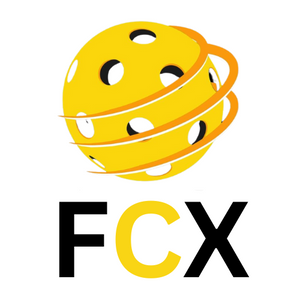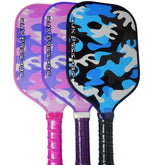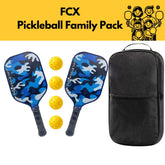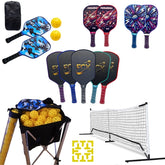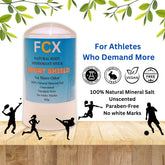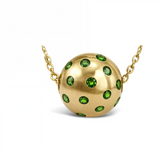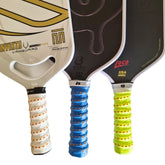Growing Your Pickleball Club: Lessons from the U.S. to Boost Membership & Revenue
Pickleball’s explosive growth shows no signs of slowing down – especially in the United States, where nearly 20 million people played in 2024 alone. Australia’s pickleball scene is newer but rapidly expanding (over 90,000 Aussies are already playing as of 2024). With the U.S. market a few steps ahead, Australian clubs can draw on proven strategies from successful American venues. This post outlines practical, actionable tactics for hybrid pickleball clubs (with both indoor and outdoor courts) to increase membership and revenue. We’ll cover community engagement, event programming, training offerings, dynamic pricing, club software, merchandise sales, facility expansion, and local partnerships – all sustainable growth strategies that small community clubs and large commercial venues alike can implement. Let’s dive in!
Foster Community Engagement and Culture
Players gather for an indoor pickleball event – community-building activities foster loyalty and club growth.
At the heart of every thriving pickleball club is a strong sense of community. Fostering an inclusive, social atmosphere will keep players coming back and attract new members through word-of-mouth. In the U.S., clubs prioritize community engagement as a cornerstone of growth. Here’s how you can do the same:
-
Host Regular Social Play and Mixers: Schedule weekly social events or drop-in sessions where members of all levels can mingle and play in a fun, low-pressure setting. These can be round-robin mixers, “newbie nights,” or creative formats like a Crazy Eights Night – a weekly social pickleball event that one U.S. club started. The result? It became a “can’t miss” weekly social anchor, growing so popular that the club expanded it to three nights per week with 150+ total participants by summer’s end. The social aspect of pickleball is often what keeps members coming back, so creating these bonding opportunities is key. Players who form friendships and have fun off the court are much less likely to cancel their membership.
-
Create a Welcoming Environment for All Ages: Encourage a culture of mentorship and inclusivity. For example, set up an ambassador or “buddy” system to welcome beginners and pair them with experienced players. Many U.S. clubs credit their friendly, welcoming vibe for their member retention. Make sure seniors, juniors, and everyone in between feels at home – perhaps offer coffee mornings for retirees or family play days on weekends. Community-building initiatives like these give members a sense of belonging and club pride. In fact, clubs have found that fostering a welcoming, inclusive atmosphere leads to stronger loyalty and long-term growth.
-
Organize Social Events Off the Court: Don’t limit community engagement to gameplay alone. Successful clubs often host barbecues, potluck dinners, holiday parties, charity fundraisers, or even trivia nights for their members. These off-court social gatherings deepen relationships among players. For instance, consider celebrating club milestones or tournament after-parties. Such events strengthen the club’s social fabric and keep members invested in the community. Pickleball Club Magazine notes that clubs can “foster community engagement by organizing social events, workshops, and seminars” tailored to members’ interests. The more your club feels like a family, the more members will stick around and bring their friends along.
By prioritizing community engagement, your club builds a loyal membership base that sustains growth. A friendly culture not only retains players but also turns them into brand ambassadors who recruit new members. In short, a fun, welcoming community is your club’s best marketing tool.
Offer Dynamic Event Programming
A diverse, exciting event calendar will both increase revenue and keep members engaged. American pickleball clubs have mastered the art of programming – from competitive leagues to fun-themed tournaments – to give players constant reasons to come back. Here are some proven strategies:
-
Run Leagues and Ladders: Organized league play (weekly matches with standings) or ladder systems are highly effective for boosting engagement and revenue. Leagues provide players with a friendly competitive outlet and a goal to work toward each week, which increases their weekly participation and strengthens member experience. For the club, leagues create a steady, predictable revenue stream (through league fees) and foster loyalty as players commit to the full season. Many U.S. clubs run skill-based leagues (e.g. beginner, intermediate, advanced) or age-group leagues, ensuring everyone can join a suitable competitive bracket. Pro tip from U.S. club managers: don’t rely solely on casual open play – engaging weekly events like leagues, ladders or mini-tournaments create excitement and community loyalty.
-
Host Tournaments and Themed Events: Tournaments are a lucrative opportunity and a great marketing tool for your club. Consider hosting monthly or quarterly tournaments – from club championships to fun themed tourneys (e.g. wood-paddle retro tournament, costume pickleball on Halloween, etc.). Tournaments can attract players from the broader pickleball community, bringing in not only entry fee revenue but also out-of-town visitors who spend on food, drinks, and merchandise at your facility. Plan a few marquee events each year and promote them widely. For example, some U.S. clubs host charity tournaments or inter-club “challenge cups” that draw big crowds. Just be sure to balance tournament scheduling with regular member play access – you don’t want to frustrate members by overloading your calendar with outside events. When done right, tournaments raise your club’s profile and revenues. (Real-world example: The “Madtown Pickleball Open” started as a local tourney and grew into the largest pickleball tournament in Wisconsin through smart promotion and community buzz.)
-
Offer Variety: Social & Competitive: To maximize appeal, cater to both social players and competition-oriented players. Many successful clubs alternate event formats – for instance, a fun social mixer every week (open to all levels) and a more competitive bracket or ladder event each month for the serious crowd. This balanced approach ensures different member segments stay engaged. Social events (like mixer nights, skills challenges, or parent-child play days) emphasize fun and friendship, while competitive events (like skill-level tournaments, ladder leagues) give avid players the challenge they crave. By serving multiple interests, you’ll keep a broader swath of members active in the club.
-
Leverage Off-Peak Times for Events: Get creative with scheduling to make the most of your facility’s capacity. U.S. clubs often run events during non-prime hours – for example, a Friday morning seniors social, or a Sunday evening family night. This strategy fills otherwise quiet slots with revenue-generating activity. Corporate events are another untapped opportunity: invite local companies for team-building pickleball outings or mini-tournaments, especially on weekdays when courts might be idle. These corporate bookings command premium pricing and often introduce new potential members to your club. The idea is to utilize every court hour wisely – peak times can be reserved for open play (when demand is high), and structured events can be placed in shoulder or off-peak times. This kind of programming optimization keeps courts full and revenue flowing around the clock.
In summary, a robust event calendar – leagues, tournaments, mixers, and special events – drives engagement and revenue hand in hand. Members stay excited and involved, while entry fees and increased visits boost your bottom line. Take a page from U.S. clubs by creating a year-round schedule of events that players can’t wait to participate in.
Develop Training and Coaching Programs
Instructional programs are a win-win: they help players improve (enhancing their experience) and provide a valuable additional revenue stream for clubs. Successful American clubs invest heavily in training offerings – knowing that educated, skilled players become long-term members and ambassadors. Here’s how to grow through coaching and clinics:
-
Beginner Clinics to Onboard New Players: Every new player is a potential long-term member – if you give them a great start. Offer frequent Pickleball 101 clinics or beginner bootcamps to introduce the basics in a welcoming group setting. These clinics often become “one of the most powerful tools for driving long-term revenue,” because a newbie who falls in love with pickleball at your club can become a loyal member for years. U.S. clubs have found that converting a curious newcomer via a beginner class yields a higher lifetime value than even an experienced player joining, since you’re essentially creating a brand-new enthusiast who is attached to your facility. Consider offering the first lesson free or a low-cost 4-week beginner series – it lowers the barrier to try, and many of those beginners will continue with memberships or court rentals after the program.
-
Intermediate and Advanced Training: Don’t stop at beginners – provide a pathway for continued skill development. Organize intermediate clinics, drill sessions, and strategy workshops for players looking to level up their game. Popular U.S. clubs run clinics focused on specific skills (e.g. serving, third-shot drop) and advanced strategy sessions (e.g. doubles positioning). Not only do these programs generate revenue (clinic fees or per-session charges), but they also keep avid players engaged and improving within your club rather than seeking outside coaching. Private lessons are another excellent offering – many clubs have a few certified instructors on staff to do one-on-one or small-group lessons for a premium fee. Facilities that invest in experienced instructors and structured training programs can generate significant revenue while enhancing player engagement and retention. In other words, good coaching is good business – your players progress faster and value their membership more.
-
Schedule Lessons Strategically: A key insight from U.S. club operators is to schedule coaching programs during off-peak hours whenever possible. Save your prime-time courts for open play or high-volume events, and use daytime or mid-afternoon slots for clinics and lessons. For example, you might run beginner clinics on weekday mornings or early afternoons, senior lessons mid-day, and junior training after school – times when regular court demand is lower. This way, instruction drives traffic (and revenue) in periods that would otherwise be slow, without displacing your peak-time players. It’s a scheduling win-win that maximizes facility utilization. Additionally, consider shorter series or single-day workshops to accommodate busy schedules (e.g., a 2-hour Saturday clinic on spin serves). By being flexible and strategic, you’ll get more participants and more profit from your training offerings.
-
Promote Coaching as Part of Membership Value: Make sure your members know about and take advantage of the training available. Offer member-exclusive discounts on clinics or a free lesson as a membership perk. Some U.S. clubs bundle “new member starter packages” that include a few lessons, court time, and a paddle – giving newcomers everything they need to hit the ground running. Highlighting improvement and learning in your club’s culture also has an intangible benefit: it creates an environment where members are excited to progress (and thus stick around). When players see tangible improvement in their game thanks to your club’s programs, they’re more likely to remain loyal members and advocates.
In short, robust training programs broaden your revenue streams and strengthen member loyalty. You’ll be monetizing off-peak hours, turning newbies into devoted players, and giving experienced members reasons to stay and keep getting better. Education is powerful – both for player development and for your club’s growth.
Implement Smart Pricing and Membership Models
How you structure your pricing can dramatically impact both participation and profitability. Dynamic pricing – adjusting fees based on demand, offering different membership tiers, and running timely promotions – is widely used by U.S. clubs to maximize revenue without alienating players. By being strategic about pricing, Australian clubs can attract more members and fill more courts. Consider these approaches:
-
Peak vs. Off-Peak Pricing: One of the simplest and most effective strategies is to charge different rates for high-demand times versus quieter times. “The first place to start with pickleball pricing is a peak and off-peak model,” advises a U.S. club management expert. Identify when your courts are busiest (e.g. weekday evenings, Saturday mornings) and when they tend to have open slots. Set higher court rental or guest fees during the prime times, and offer discounted rates during slow periods to entice players. For instance, a club might charge $20/hour in the evening but only $12/hour mid-day. Players who prefer a bargain will shift to off-peak slots – keeping your courts busy and members happy, rather than leaving money on the table. The goal is to encourage use of off-peak hours (through lower prices or specials) while capturing full value during peak hours when demand is high. This dynamic pricing boosts overall utilization and revenue.
-
Flexible Membership Options: Take a critical look at your membership models. Successful clubs often offer a mix of plans to suit different needs – for example, an unlimited play membership, a daytime-only membership at lower cost, family or household packages, or even hybrid models that combine membership with pay-as-you-go. In the U.S., some clubs allow both members and non-members: members pay a monthly/annual fee for perks like free court reservations and advance booking, while non-members can play but pay court fees each time. This approach can capture casual players without losing the stability of memberships. One club (Pickleball Zone in Oregon) gives members priority booking (6 days ahead) and free court reservations, whereas the public can book 5 days ahead for a fee – a setup that successfully incentivized many players to convert to full membership for the added benefits. The takeaway: structure your offerings so that membership clearly delivers the best overall value (e.g. cost savings, convenience), while still welcoming drop-in revenue from non-members. Additionally, consider seasonal memberships or short-term passes if that fits your climate (e.g. a winter indoor pass), so players have options beyond all-or-nothing.
-
Promotions and Discounts: Use targeted promotions to boost engagement during low-demand periods or to entice new members. For example, you might run a “New Member Special” – no joining fee and 10% off the first 3 months – to encourage sign-ups. Or offer happy hour court rates on Friday afternoons. Many U.S. clubs also reward loyalty: discounts for booking multiple sessions (e.g. a 10-play pass), early-bird registration discounts for leagues, or referral bonuses (bring a friend, get a free clinic). Running special offers when demand is low can successfully draw in players who wouldn’t otherwise come. Even something as simple as a free guest day or a free coffee for morning players can tip the scales. The key is to be proactive and creative – monitor your court utilization and don’t be afraid to drop prices or add perks to fill slow times. Players appreciate clubs that provide value, and a well-timed deal can convert an occasional player into a regular.
-
Clear, Fair Policies: On the operational side of pricing, ensure you have straightforward booking and cancellation policies that keep revenue steady. For instance, require prepayment or a credit card hold for court bookings and enforce a reasonable late cancellation fee – this prevents no-shows from costing you income. Some clubs institute a “use it or lose it” policy for advance bookings (players must use one reservation before booking another) to prevent a few members from hogging prime slots. While these are more about policy than pricing, they contribute to fairness and maximize court usage, indirectly boosting revenue. Also, keep pricing simple enough that staff and members understand it easily – transparency builds trust. The bottom line: smart pricing is about balancing access with profit. The U.S. experience shows that dynamic pricing and thoughtful membership models can significantly increase a club’s revenue per court while still growing the member base.
By implementing these pricing strategies, clubs can improve their financial performance without sacrificing player satisfaction. In fact, when done correctly, dynamic pricing enhances the player experience – courts are less crowded at peak times, new players find affordable entry points, and loyal members feel they’re getting value. Regularly revisit your pricing strategy and be willing to adapt as your club grows.
Harness Club Management Software and Technology
Modern club management software is a game-changer for pickleball clubs, big and small. In the U.S., even community clubs have adopted management platforms to streamline operations and create a better member experience. The right software can automate tedious tasks, provide actionable data, and keep your members engaged – ultimately boosting your revenue and retention. Here’s how technology can elevate your club:
-
Streamline Scheduling and Booking: Ditch the paper sign-up sheets and endless text threads – a good club management system or reservation app lets members see court availability and book in real time, anytime. This not only saves your administrators countless hours, but also makes it easier for players to play more often. For example, a software like CourtReserve or Qest allows players to self-book courts or classes through a mobile-friendly interface. It can handle waitlists and auto-notifications, so if a spot opens, players get alerted instantly. No more bottlenecks or double-bookings – technology ensures every square foot of your club can be utilized efficiently. In practice, that means fewer empty courts and happier members. Automation also extends to payments: club software will let you accept payments online, manage memberships, and even handle recurring billing seamlessly. Members can sign up for a membership or event and pay in one go, which improves cash flow and reduces no-shows.
-
Gain Data and Insights: One of the biggest advantages of using software is the ability to track and analyze your club’s operations. A robust system will offer reporting tools and dashboards that show you exactly what’s going on – which courts are most used, which programs are most popular, revenue by category, peak usage times, and more. By regularly reviewing this data, you can make informed decisions to increase revenue. For instance, if reports show Tuesday 6-8pm is consistently full, you might add another league then (or increase pricing for that slot). If a certain clinic isn’t drawing attendance, you’ll see that and can replace it with something else. Tracking key performance indicators like membership growth, retention rates, event attendance, and pro shop sales becomes much easier when the software aggregates it for you. Having a clear view of your financial and usage metrics lets you identify opportunities for growth and areas for improvement. In short, data = knowledge, and knowledge = power to optimize your club’s success.
-
Improve Member Communication and Retention: Club software often includes built-in communication tools or CRM (Customer Relationship Management) features. These can significantly boost member engagement. For example, you can send automated email/text notifications for court reservations, event reminders, or club announcements – keeping members in the loop effortlessly. Advanced platforms even let you segment your membership and tailor messages: send a welcome series to new members, a “we miss you” note to someone who hasn’t played in a month, or a happy birthday message (perhaps with a free guest pass). Automating communication and follow-ups helps members feel connected and valued,which in turn boosts loyalty. You can also gather feedback easily via surveys or track satisfaction. In the U.S., clubs have found that engaging members through multiple channels – app notifications, social media groups, newsletters – enhances the sense of community and reduces churn. A member who feels cared for and informed is far more likely to renew their membership. Essentially, let the software handle the touchpoints so no one falls through the cracks.
-
Increase Operational Efficiency: Lastly, technology can cut costs and free up your staff (or volunteers) to focus on high-impact activities. Features like self check-in kiosks, digital waivers, and integrated point-of-sale for your pro shop or cafe reduce the administrative burden. For example, with keyless entry systems tied to your reservation software, you could allow trusted members to access courts during off-hours with a PIN code – extending playing hours without needing staff on site (some U.S. clubs have 24/7 access for members via electronic locks). Less time spent on manual admin means more time spent improving programs, teaching, or marketing your club. And if you’re managing multiple venues or a growing member list, a good software platform will scale with you. The most successful U.S. facilities use “robust reservation platforms to manage bookings, memberships and event scheduling, reducing administrative burdens and improving the player experience”. In other words, tech helps you do more with less, and do it better.
Investing in club management software might seem like a big step, but it’s increasingly accessible and affordable – there are even free or low-cost options for small clubs. The payoff in professionalism, member satisfaction, and time saved (which is money saved) can be tremendous. As the pickleball industry modernizes, utilizing these digital tools will give your club an edge and position you for sustainable growth.
Expand Revenue through Merchandise and Amenities
Don’t overlook the beyond-the-court revenue opportunities. Many American clubs have unlocked substantial income by selling gear, apparel, and refreshments – all while enhancing their brand and member experience. A well-run pro shop or café can turn your club into a one-stop destination and significantly increase your revenue per member. Here are some ideas:
A well-stocked pickleball pro shop can generate significant revenue while serving members’ equipment needs.
-
Set Up a Pro Shop (Big or Small): Even a modest retail corner in your facility can become a growth engine. Players constantly need paddles, balls, grips, shoes, bags – why send them elsewhere to buy these? Stock popular pickleball equipment and consider offering your own branded merchandise (t-shirts, hats with your club logo) as well. Club pros in the U.S. report that a pro shop is not only a convenience for players but “a great way to bring customers into your facility and increase your club’s revenue”. It also reinforces your club’s presence in the community (people wearing your logo around town is free advertising!). Some clubs go further and partner with suppliers to get bulk rates or demo deals – for example, becoming a dealer for a paddle brand, or hosting demo days where players can try and buy equipment. One creative approach: assemble “starter kits” for new members (paddle, balls, rulebook, etc.) and sell them as bundles – newbies appreciate the guidance, and you earn margin on each item. Keep in mind, a pro shop doesn’t have to be huge; it can start as a single display case or online pre-order system. The key is to identify what products your members want and have them available conveniently at the club. (A real-world example: Proshot Pickleball in New Jersey opened with an in-house pro shop, and even brought in an independent retailer, Landing Creek Pickleball, to run it. Together they offer everything from paddles and grips to protective eyewear and apparel, and Landing Creek also launched an online store to reach more customers. The owner, a former retail business operator, says he “saw continued growth in pickleball through retail,” which is why he made the pro shop a priority from day one.)
-
Sell Branded Apparel and Accessories: People love to show off their pickleball passion. Selling items with your club’s branding both generates revenue and promotes your club at the same time. Common items are shirts, hoodies, caps, water bottles, decals, etc. You can also carry general pickleball apparel (fun slogan shirts or socks) if you have the means. In the U.S., clubs have noted that merchandise sales can be a meaningful contributor to the bottom line. As Pickleball Club Magazine put it, the pro shop is perhaps one of the most underutilized yet high-potential revenue sources for clubs. For Australian clubs, even without a physical “shop,” you could take orders for club shirts or partner with a local print shop for on-demand merch. Plus, seeing members wearing club gear builds camaraderie and identity.
-
Offer Stringing or Equipment Services: If you have the expertise, consider offering paddle-related services (equivalent to a tennis club stringing racket). For example, installing overgrips, replacing paddle grips, or even demonstrating how to maintain equipment. These services may not be huge moneymakers, but they draw players to your shop area and often lead to impulse purchases. Some U.S. clubs also rent out ball machines or high-end demo paddles for a fee – another small revenue stream that adds value for members.
-
Food & Beverage for Extra Income: If your facility allows, having snacks, drinks, or even a small café can boost both revenue and member satisfaction. After a vigorous game, players might grab a sports drink, a coffee, or a beer (if allowed) – and they’d happily buy it on-site. Clubs in the U.S. ranging from community centers to large venues like Chicken N Pickle have shown that a café or bar can become an independent revenue stream while making the club a more social, hang-out spot. You don’t need a full kitchen to start; a fridge with cold drinks and some energy bars at the front desk is a simple option. As you grow, you might expand offerings. One high-end example: La Jolla Beach & Tennis Club in California not only offers pickleball and tennis programs, but also multiple dining options on-site – making the club a popular destination even for non-players. While not every club can install a restaurant, the principle is to provide some amenities to keep people at your facility longer (and spending a bit more). Importantly, F&B and retail also enhance the member experience – a player who can relax with friends over a drink or easily grab a new pack of balls on the spot will appreciate the convenience and atmosphere.
In implementing merchandise and F&B, start within your means and focus on what your members are asking for. You might survey members on what products or snacks they’d buy. Keep an eye on inventory management (club management software often has point-of-sale modules to help track sales and stock). And don’t hesitate to form partnerships with suppliers – e.g., get a local bakery’s goods in your cafe, or have a sporting goods store sponsor your pro shop in exchange for revenue sharing. Done right, these “extras” can account for a healthy chunk of your club’s revenue. Selling branded merch and refreshments not only boosts profits but also turns your club into a lively hub where players stick around longer and feel more invested.
Enhance Facilities and Expand Capacity
As your club grows, reinvesting in facilities can unlock new growth. The U.S. pickleball boom has seen clubs rapidly adding courts, converting spaces, and upgrading amenities to meet demand – and those that do so thoughtfully reap the rewards of increased membership and revenue. For Australian clubs, being proactive about facility improvements (both indoor and outdoor) will ensure you can accommodate more players and provide a top-notch experience. Consider these tips:
-
Add Courts or Expand Court Access: If you consistently have waitlists or crowded sessions, it’s a strong signal that your club could benefit from more courts. Expansion might mean building new courts (permanent or temporary), painting additional court lines in existing halls, or negotiating shared use of nearby facilities (like a school gym during off-hours). Successful U.S. clubs often offer a mix of indoor and outdoor courts – this hybrid model provides year-round play and flexibility. For example, a club might start with outdoor courts and later add an indoor bubble or partner with an indoor sports center for winter access. More courts = more capacity for members and events, which directly drives membership growth. Indeed, industry leaders note that offering both indoor/outdoor play along with social spaces is key to encouraging membership and retention. If building new courts isn’t immediately feasible, explore creative options: portable nets and temporary lines on tennis or basketball courts can increase capacity cheaply. Also, extending play hours (early morning or later at night, with good lighting) effectively “expands” capacity within existing courts. Many clubs install lights for outdoor courts to allow evening play, or use keyless entry systems to let keen members play at dawn or late night on indoor courts. The easier it is for members to get on a court when they want, the more value they get from membership – and the more likely they’ll renew and recommend your club.
-
Improve Amenities and Comfort: Enhancing the player experience through facility upgrades can pay off in member satisfaction and retention. Think about what amenities your club’s demographic would appreciate. Common upgrades in U.S. clubs include adding seating areas or a lounge for players to relax and socialize between games, providing water coolers or a pro-shop lounge, ensuring clean restrooms and perhaps locker/shower facilities if possible. Even simple touches like shade canopies or windbreaks at outdoor courts, benches, and a bulletin board for club news can elevate the atmosphere. An inviting, functional space signals professionalism and makes people want to spend time there. If spectators often come (family or friends), having some bleachers or comfy chairs can turn a visit into a pleasant outing – and maybe convert those spectators into new players! Remember, your facility itself can be a marketing asset. When visitors walk in and see a vibrant, well-kept club, they’re more inclined to join. On the flip side, if your courts look run-down or overcrowded, it might deter sign-ups. Therefore, allocate budget to maintenance and upgrades as you grow – it’s an investment in your club’s appeal. As one facility operator put it, don’t skimp on lighting and court surfaces if you can help it; quality courts and good lighting make a real difference in play experience.
-
Utilize Space for Multi-Purpose Events: Another aspect of facility maximization is using your space for more than just open play. We touched on hosting non-pickleball events under programming (like exercise classes or private parties on the courts). If you have a nice clubhouse or outdoor area, consider renting it out for community events, meetings, or fitness classes when it’s not in pickleball use. Some American clubs rent their facility for birthday parties or group outings – additional income that doesn’t compete with regular play. Smash Park in the U.S., for example, turned their venue into a multi-activity entertainment hub (with pickleball, yes, but also an arcade, cornhole, axe throwing, etc.). While that’s an extreme case of diversification, it illustrates the point that diverse uses of your space can open new revenue streams and broaden your audience. For a community club, this might simply mean collaborating with a local yoga instructor to offer morning stretch classes on a pickleball court or allowing a neighboring business to host a team-building event at your facility. These partnerships can also strengthen your community ties.
-
Plan for Scalable Growth: Always keep an eye on the future. If memberships are climbing, start planning early for how you’ll handle the growth at say, 2x the members. This could involve fundraising or applying for grants to build more courts (the Australian Sports Commission’s recognition of pickleball’s growth may open doors for facility funding). In the U.S., numerous clubs have successfully campaigned for city support or member donations to expand. Show that increased capacity benefits the whole community by reducing wait times and introducing more people to the sport. When you do expand, publicize it – expansions signal momentum and success, which can attract even more members (“new courts coming soon” is an exciting headline for local news and pickleball forums).
In essence, investing in your facility – more courts, better amenities, extended access – creates a virtuous cycle: it attracts more players, who bring in more revenue, which funds further improvements. The most successful U.S. clubs have become destinations not just because of programming, but because their facilities are top-notch and accommodating. With strategic enhancements, your club can similarly become the go-to pickleball venue in your area, indoor or outdoor.
Build Local Partnerships and Sponsorships
Growing a pickleball club isn’t done in isolation – it thrives best as part of a broader community ecosystem. American clubs have been very effective in partnering with local businesses, schools, and organizations to bolster their operations and outreach. The right partnerships can provide sponsors (financial support), increase your club’s visibility, and integrate you into the community fabric, all of which drive membership and revenue upward. Here’s how you can emulate that success:
-
Pursue Local Business Sponsorships: The demographics of pickleball (a mix of active seniors, adults with disposable income, and an increasing number of younger players) make for an attractive audience to many businesses. Savvy U.S. clubs have capitalized on this by securing corporate sponsors for their facilities, events, or leagues. Club Pickleball USA in Utah is a prime example – before they even opened, they lined up sponsorship relationships, operating on the belief that “the pickleball community is the perfect demographic for almost any business looking to grow their brand.” Their goal was to increase the club’s revenue while offering businesses access to their membership base. The result was a sponsorship program that helped keep membership fees affordable for players (because sponsors were contributing to revenue) and simultaneously delivered new customers to the sponsors. You can start by reaching out to businesses that complement the sport: local sporting goods stores, fitness and wellness companies, physios or health clinics, restaurants, even real estate or insurance agents who want exposure to an active community. Sponsorships and cross-promotions are mutually beneficial – you promote their business to your members, they promote your club to their customers or employees. For example, a local cafe might give your members a discount, and you let the cafe put a banner at your courts. A pharmacy might sponsor a tournament by covering the costs in exchange for putting up a booth or signage. These relationships can bring in extra funds, prizes, or services for your club events.
-
Create Sponsorship Tiers and Packages: If you pursue sponsorship more formally, consider offering tiered packages (as Club Pickleball USA did with levels named 3.0, 4.0, 5.0, etc., to appeal to various budgets). Define what each level gets – e.g., a banner on the fence, logo on your website/newsletters, naming rights to a court or league, social media shoutouts, etc. This gives businesses options to fit their budget. Many sponsors will renew if they see value; Club Pickleball USA noted that most partners upgraded or renewed their sponsorship in the second year once they experienced the benefits, and none downgraded. That speaks to the importance of delivering ROI to sponsors: showcase their brand prominently and maybe highlight any success (e.g., “Thanks to our sponsor XYZ Fitness – one of our members actually won a 3-month gym membership from them and loved it!”). Ensure someone on your team manages these relationships – regular communication and fulfillment of promises (like social media mentions or event passes) keeps sponsors happy. A well-run sponsorship program can easily become a five-figure annual revenue source for a medium-sized club, which can fund new equipment or facility upgrades.
-
Partner with Schools and Community Groups: To expand membership, get more people exposed to pickleball. Partnering with local schools, senior centers, or community recreation departments can be hugely effective. Offer to do a free pickleball demo day at the high school or a weekly clinic at the senior center – this introduces new players to the sport and funnels interested folks to your club for continued play. Some U.S. clubs run after-school pickleball programs or summer pickleball camps for kids in collaboration with community centers. Not only does this often come with some funding (schools might pay an instructor fee, or grant money might be available), it also helps seed the next generation of club members. For the senior demographic, working with retirement communities or organizations like a local chapter of a seniors’ group to host pickleball socials can similarly drive interest. Pickleball clubs can partner with senior centers, healthcare providers, or retirement communities to reach older adults and establish themselves as inclusive, welcoming spaces for seniors. This kind of outreach grows your visibility and reputation as a community asset, which can in turn attract sponsorships and maybe even municipal support.
-
Engage the Wider Community: Think about how your club can integrate into local events or civic initiatives. Participate in city sports fairs, set up a booth at community festivals, or volunteer to assist at charity events (perhaps by running a charity pickleball tournament). When people see your club giving back or being an active community member, it builds goodwill and often leads to new members. Also, consider local media partnerships – a regional radio station might sponsor your tournament in exchange for on-air mentions, for instance. The more embedded your club is in the community, the more word spreads, and that naturally leads to membership growth.
In summary, strategic partnerships can amplify your club’s growth beyond what you could achieve alone. They bring in extra funds, resources, and exposure at relatively low cost. As the U.S. example shows, businesses are eager to connect with pickleball enthusiasts, and communities are keen to support this fast-growing sport. By actively networking and collaborating in your local area, you’ll create a supportive ecosystem around your club that propels sustainable growth.
Conclusion: Sustainable Growth through Proven Strategies
Pickleball’s rise presents a tremendous opportunity for clubs that are prepared to innovate and engage. Australian clubs may be in earlier stages of this journey, but by applying battle-tested strategies from U.S. clubs, you can accelerate your growth while avoiding some trial-and-error. To recap, focus on building a welcoming community, keep your programming fresh and fun, invest in player development, and be smart about pricing and operations. Diversify your revenue – courts, lessons, events, merch, partnerships – so your club isn’t reliant on any one stream. And always keep the player experience front and center: a happy member is the best marketing you could ask for.
Every club is unique, so adapt these ideas to your context – start with the easiest wins and scale up. Whether you’re a small volunteer-run club at a local park or a commercial pickleball center, these principles can help you attract more members, increase revenue, and create a vibrant pickleball hub that endures. The table below summarizes these actionable tips for easy reference. Here’s to growing your pickleball club into a smashing success!
Partner With FCX (Australia) To Accelerate Growth
Why FCX for Clubs
-
Club‑only pricing & bundles: Paddles, balls, nets, court gear.
-
Merch & uniforms: Print‑on‑demand club tees/hoodies, team kits, warm‑ups.
-
Awards: Custom medals & trophies for leagues, ladders, and opens.
-
Done‑for‑you ops help: Scheduling advice, league formats, event calendars, inventory planning.
-
Fast fulfilment + friendly MOQs: Start small, scale when your programs fill.
Reality check: Adding a trusted supplier early cuts weeks of trial‑and‑error. Clubs in the U.S. grew fastest when they had one partner for gear + merch + events so staff could focus on programming and members.
FCX Merch & Print‑On‑Demand (Zero Inventory Headache)
-
Club store in a week: FCX sets up your artwork and sizes; members order direct; you earn commission.
-
Event capsules: Limited‑run tees/hoodies for leagues & opens (deadline drives purchases).
-
Team kits: Numbered jerseys, skirts/shorts, socks—cohesive look for inter‑club play.
Pro tip: Put QR posters courtside (“Order your club tee now”) and drop a code for first‑time buyers. That combo reliably spikes sales during week 1–2 of a league.
